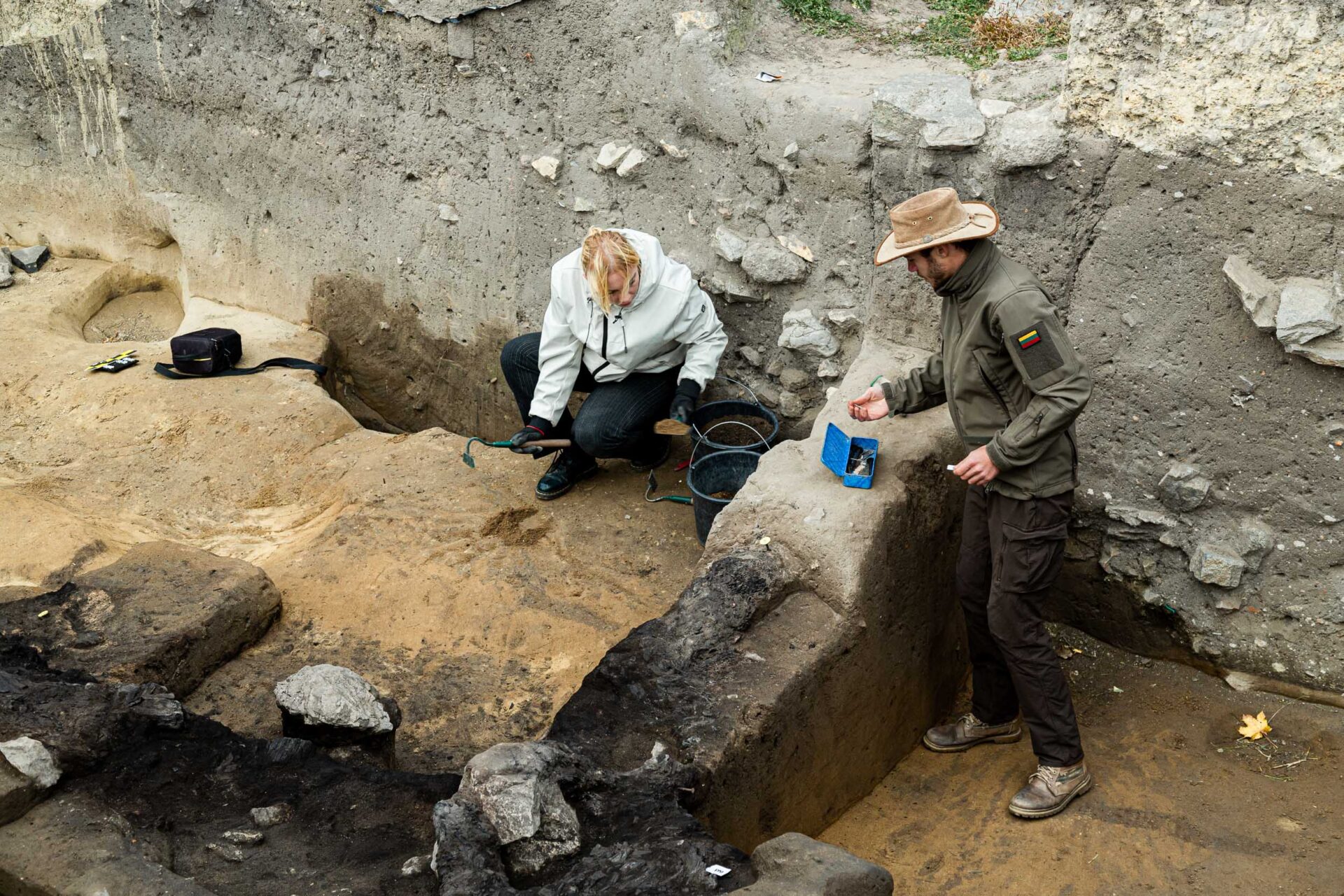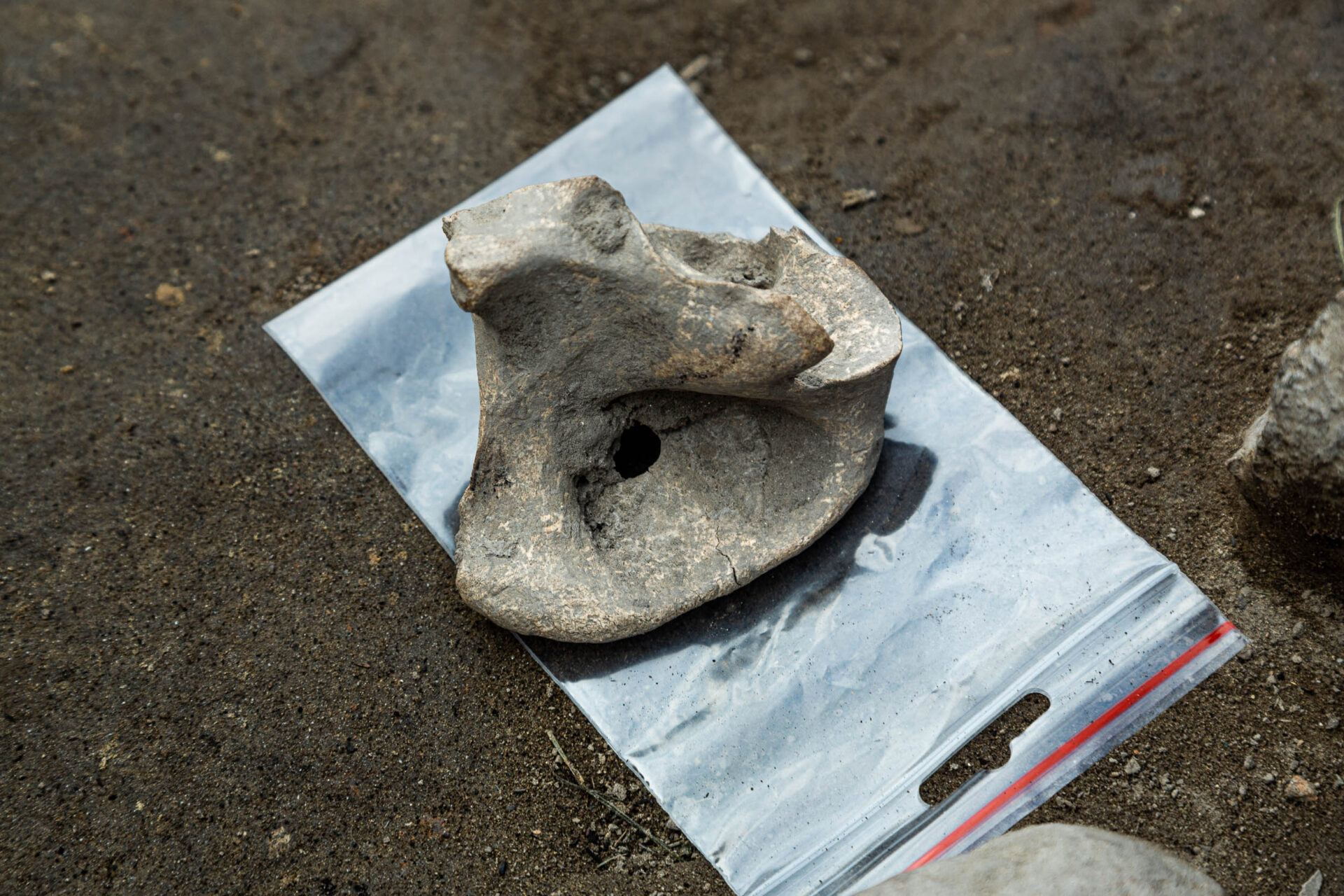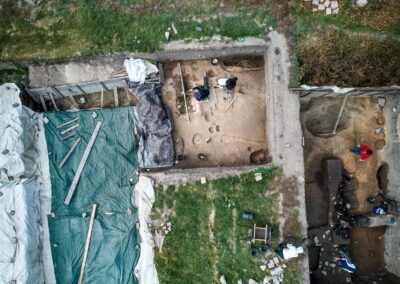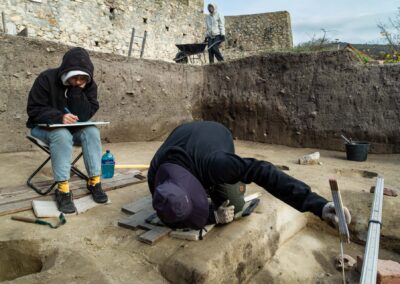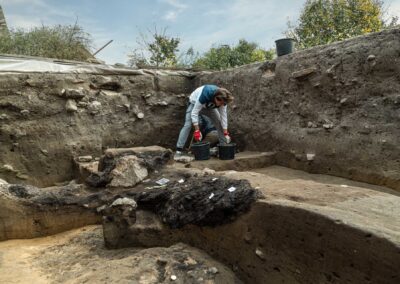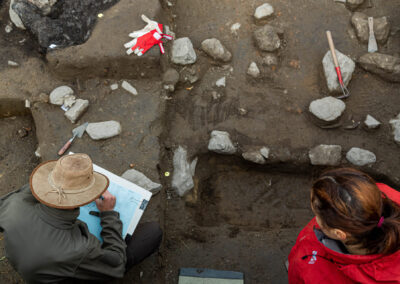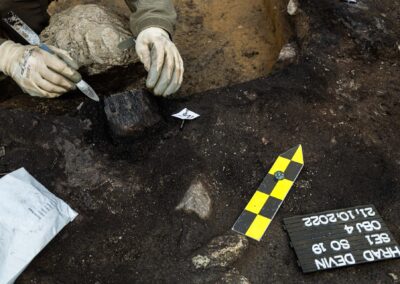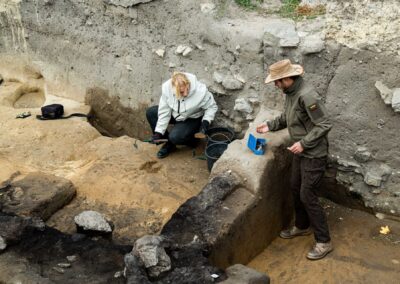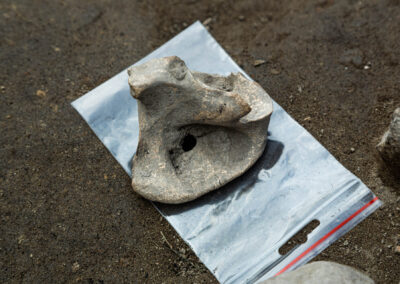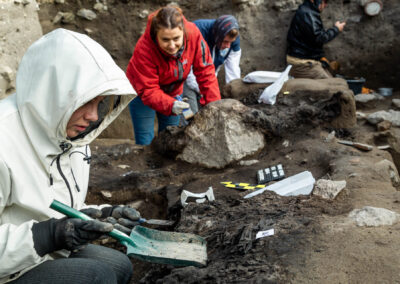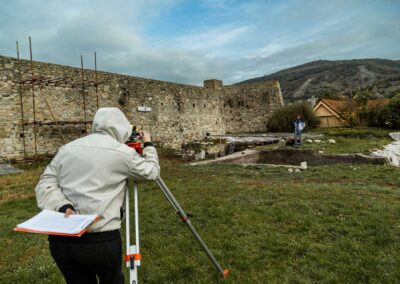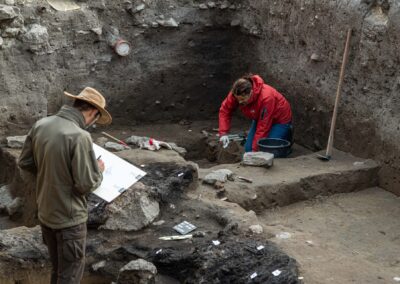What we are working on
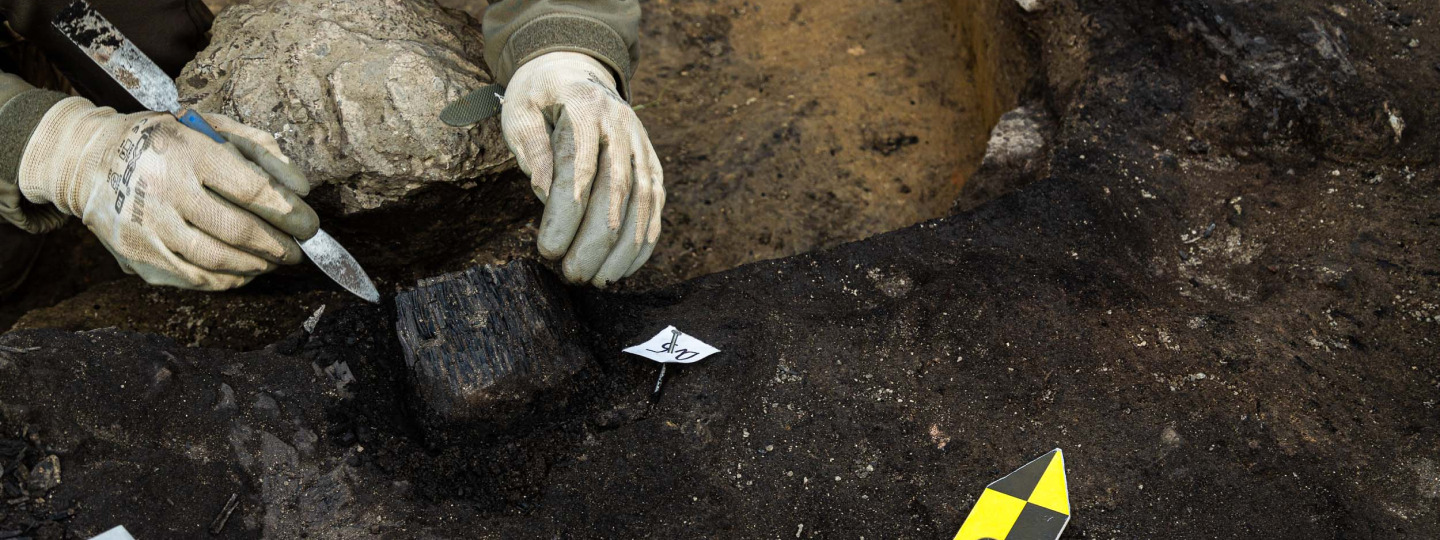
Inspiring findings have been brought by the latest archaeological research performed at the place of the planned construction of a new administration centre in the Devín Castle. The research is relating to the Katarína Harmadyová’s work between 2017 and 2021. It’s just on your left after entering the Devín Castle.
Layers dated to several centuries ago overlap with findings from more than 4,000 years ago in a relatively small area of few probes. There was a cemetery, then a dwelling, then a cemetery again on a little piece of land; this system might vacillate conventional perception of those who split the space strictly onto the world of the dead and of the living persons.
Here particular layers are mixed together, penetrating into each other. The archaeological team thus discovers in the area of one probe a Roman mortar floor, a trench profile from the turn of the 19th century, then fragments from the La Tene culture, but also material from the Early Iron Age. Remains of the wooden-clay building destroyed by fire were found here to be dated using the radiocarbon dating since no artefacts were found in their original positions enabling using other methods.
There were some trays discovered in the second probe – fine traces of a building from at least 4,300 years ago. One of the trays is crossed with a younger grave, indeed, dated very probably back to Eneolith preceding the Bronze Age. The grave is dated back to the period when the house was not standing there anymore, and it has been so far the only indication for dating the building.
The grave was found by the archaeologists Katarína Harmadyová and Dominika Hulková-Ferenčíková in 2021. A hunched-up skeleton of a young mature man is concerned here; the researchers gave him the work name Andrej. He was buried with an iron knife. In 2022, the archaeologist Peter Barta took three samples of various types of hard tissues to find out the eating habits of the man.
By using carbon and nitrogen isotopes, it can be found out how much plant-based food and how much meat-based food was eaten. And these are exactly the facts that could tell us about his social status. If he enjoyed a beef soup every day, it would have surely been demonstrated in ossein in his bones.
A grave of a child with two vessels was found there too.
The archaeologists sieve a large part of the material using sieves with holes the size of three to five millimetres. But to avoid missing even the smallest details and natural particles such as various seeds, sieving through paedological sieves is also prepared where the size of the smallest hole is a quarter of millimetre. If we succeed in finding seeds of weed or agricultural crops, we would be another step closer to the idea how the ancient inhabitants of Devín could be living.
A painted fragment from the La Tene culture dated back to the 1st century B.C., a fragment of a Roman bronze clasp, iron knifes, and nails were found in the probes as well as a whorl – a little flywheel used for spinning. It is made of a mixture of graphite which was mined in the Little Carpathians and used since the Bronze Age.
A fragment of radiolarith was found here too which could be a part of the blade on a sickle used for short-cut shearing under the decomposing ears of single- and double-grain wheat. Radiolarith is the rock formed from billions of sedimented shells of protozoa from the Radiolaria phylum which indicates an ancient deep ocean environment. These shells are microscopic, but they hide extraordinary shapes and beauty.
Sieving also helped us catch fragments of opalescent Roman glass vessels.
Text author: Andrej Barát

